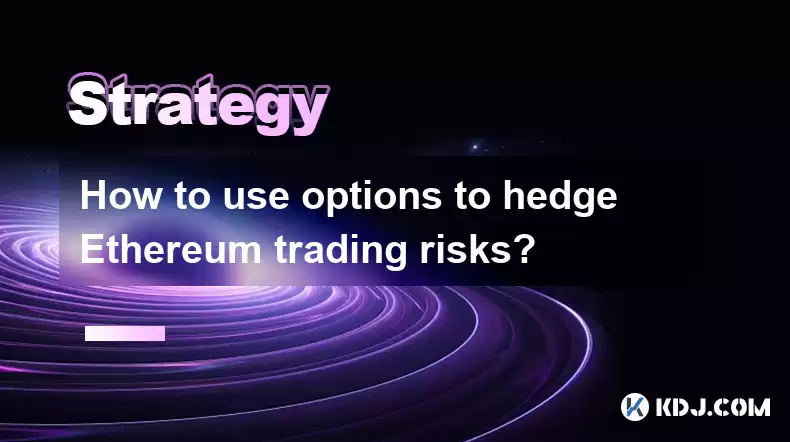-
 Bitcoin
Bitcoin $119300
2.40% -
 Ethereum
Ethereum $4254
-0.20% -
 XRP
XRP $3.184
-1.38% -
 Tether USDt
Tether USDt $1.000
0.00% -
 BNB
BNB $803.9
0.58% -
 Solana
Solana $183.1
1.50% -
 USDC
USDC $0.0000
0.01% -
 Dogecoin
Dogecoin $0.2339
-2.87% -
 TRON
TRON $0.3384
0.88% -
 Cardano
Cardano $0.8018
-0.29% -
 Hyperliquid
Hyperliquid $45.13
3.14% -
 Chainlink
Chainlink $22.10
0.96% -
 Stellar
Stellar $0.4439
-0.94% -
 Sui
Sui $3.875
-0.73% -
 Bitcoin Cash
Bitcoin Cash $570.7
0.24% -
 Hedera
Hedera $0.2589
-2.90% -
 Ethena USDe
Ethena USDe $1.001
-0.01% -
 Avalanche
Avalanche $23.83
-1.73% -
 Litecoin
Litecoin $123.8
2.61% -
 Toncoin
Toncoin $3.351
-1.13% -
 UNUS SED LEO
UNUS SED LEO $9.103
1.13% -
 Shiba Inu
Shiba Inu $0.00001356
-1.40% -
 Uniswap
Uniswap $10.93
-0.19% -
 Polkadot
Polkadot $4.057
-1.97% -
 Dai
Dai $1.000
0.01% -
 Cronos
Cronos $0.1646
4.66% -
 Ethena
Ethena $0.7974
8.11% -
 Pepe
Pepe $0.00001208
-2.89% -
 Bitget Token
Bitget Token $4.445
-1.70% -
 Monero
Monero $268.8
-2.00%
How to use options to hedge Ethereum trading risks?
Understanding options basics, such as contract rights, premiums, and price correlations, lays the foundation for effective hedging of Ethereum trades.
Feb 25, 2025 at 10:18 am

Key Points:
- Understanding Options Basics
- Identifying Hedging Goals
- Selecting the Appropriate Option Strategy
- Calculating Potential Profit and Loss
- Managing Risk and Adjusting Positions
1. Understanding Options Basics
- Options contracts provide holders the right but not the obligation to buy (call) or sell (put) an underlying asset at a specified price (strike price) within a defined period (expiration date).
- Premiums are paid to the option seller to acquire this right. The premium reflects the asset's current market price, volatility, and time to expiration.
- Call options allow holders to profit from rising prices, while put options benefit from falling prices.
2. Identifying Hedging Goals
- Hedging aims to reduce the risk of adverse price movements in underlying assets.
- In Ethereum trading, investors may seek to protect paper profits, mitigate potential losses, or maintain a target price range.
- Hedging strategies should align with individual risk tolerance and investment objectives.
3. Selecting the Appropriate Option Strategy
- Bull Call Spread: Buying an in-the-money (ITM) call and selling an out-of-the-money (OTM) call with different strike prices to protect gains on rising prices.
- Bull Put Spread: Selling an ITM put and buying an OTM put to reduce potential losses while allowing for some price appreciation.
- Bear Call Spread: Selling an ITM call and buying an OTM call to hedge against price declines.
- Bear Put Spread: Buying an ITM put and selling an OTM put to protect gains on falling prices.
4. Calculating Potential Profit and Loss
- Determine the premium paid or received for the option contracts.
- Calculate potential profit as the difference between the strike price and the underlying asset's closing price at expiration (for call options), or vice versa (for put options).
- Account for the premium paid and any closing fees in the final profit or loss calculation.
5. Managing Risk and Adjusting Positions
- Monitor market conditions and adjust positions as necessary to maintain desired risk levels.
- Consider rolling over expiring options to extend hedging coverage.
- Rebalance the option spread by adjusting the number or strike prices of options if risk parameters change.
FAQs:
What is the benefit of hedging Ethereum trades with options?
- Options provide flexibility to protect profits, mitigate losses, and manage risk in dynamic market conditions.
What is the difference between a call and a put option?
- Call options grant the right to buy, while put options grant the right to sell the underlying asset.
How do I determine the appropriate strike price for hedging?
- Consider the current market price, expected price movement, and personal risk tolerance when selecting the strike price.
Can I use options to speculate on Ethereum price movements?
- Yes, options contracts can be used for speculative trading, but this strategy requires a higher level of risk management.
Are there any risks associated with using options for hedging?
- Yes, options hedging can involve premium costs, slippage, and potential losses due to market volatility and miscalculations.
Disclaimer:info@kdj.com
The information provided is not trading advice. kdj.com does not assume any responsibility for any investments made based on the information provided in this article. Cryptocurrencies are highly volatile and it is highly recommended that you invest with caution after thorough research!
If you believe that the content used on this website infringes your copyright, please contact us immediately (info@kdj.com) and we will delete it promptly.
- KiwiSavers, Crypto Returns, and Digital Investment: Are Kiwis Missing Out?
- 2025-08-11 06:30:11
- Ruvi AI's Sales Surge: Could It Outpace Tron in the Crypto Race?
- 2025-08-11 06:30:11
- Meme Coin Mania: Is Shiba Inu Out and Little Pepe In?
- 2025-08-11 06:50:12
- Bitcoin Casino Weekly Challenge: Hitting the Jackpot in Crypto Gaming
- 2025-08-11 06:50:12
- Cardano (ADA): Riding the Bull Cycle Wave to New Heights?
- 2025-08-11 07:10:12
- Bitcoin Institutional Holdings in 2025: A Bullish Outlook
- 2025-08-11 07:15:19
Related knowledge

How to use stop-loss orders to limit potential losses?
Aug 08,2025 at 02:01pm
Understanding Stop-Loss Orders in Cryptocurrency TradingA stop-loss order is a risk management tool used by traders to automatically sell a cryptocurr...

What are the most promising altcoins to invest in?
Aug 10,2025 at 11:42am
Understanding the Role of Private Keys in Cryptocurrency WalletsIn the world of cryptocurrency, private keys are the cornerstone of ownership and cont...

How to read cryptocurrency charts and use technical analysis?
Aug 08,2025 at 11:08am
Understanding the Basics of Cryptocurrency ChartsCryptocurrency charts are graphical representations of price movements over time. These charts are es...

What is the difference between long-term holding (HODLing) and short-term trading?
Aug 10,2025 at 05:30pm
Understanding HODLing in the Cryptocurrency SpaceThe term HODL originated from a typo in a 2013 Bitcoin forum post and has since become a widely accep...

How to do your own research (DYOR) before investing in a crypto project?
Aug 08,2025 at 09:07pm
Understanding the Core Principles of DYOR in CryptocurrencyEngaging in due diligence before investing in any cryptocurrency project is essential to mi...

How to build a diversified crypto portfolio?
Aug 09,2025 at 12:21pm
Understanding the Importance of Diversification in CryptoDiversification in the cryptocurrency space is a strategy used to reduce risk by spreading in...

How to use stop-loss orders to limit potential losses?
Aug 08,2025 at 02:01pm
Understanding Stop-Loss Orders in Cryptocurrency TradingA stop-loss order is a risk management tool used by traders to automatically sell a cryptocurr...

What are the most promising altcoins to invest in?
Aug 10,2025 at 11:42am
Understanding the Role of Private Keys in Cryptocurrency WalletsIn the world of cryptocurrency, private keys are the cornerstone of ownership and cont...

How to read cryptocurrency charts and use technical analysis?
Aug 08,2025 at 11:08am
Understanding the Basics of Cryptocurrency ChartsCryptocurrency charts are graphical representations of price movements over time. These charts are es...

What is the difference between long-term holding (HODLing) and short-term trading?
Aug 10,2025 at 05:30pm
Understanding HODLing in the Cryptocurrency SpaceThe term HODL originated from a typo in a 2013 Bitcoin forum post and has since become a widely accep...

How to do your own research (DYOR) before investing in a crypto project?
Aug 08,2025 at 09:07pm
Understanding the Core Principles of DYOR in CryptocurrencyEngaging in due diligence before investing in any cryptocurrency project is essential to mi...

How to build a diversified crypto portfolio?
Aug 09,2025 at 12:21pm
Understanding the Importance of Diversification in CryptoDiversification in the cryptocurrency space is a strategy used to reduce risk by spreading in...
See all articles

























































































